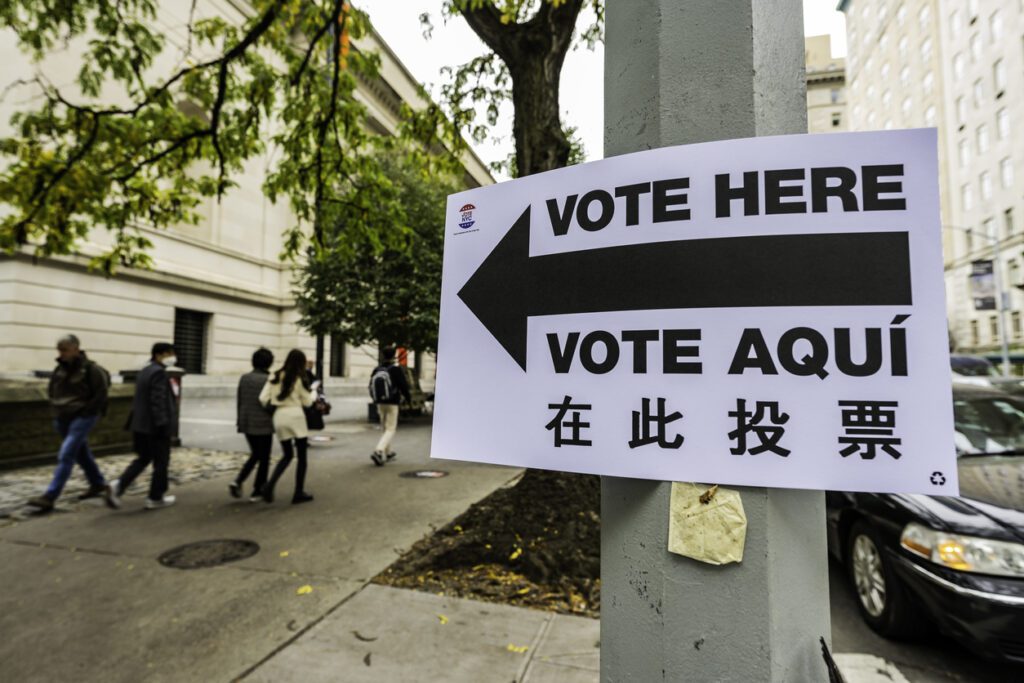These 3 Voting Blocs Could Save the Midterms for Democrats

Image Credit: Christine McCann
By many accounts, Democrats are in for a drubbing this November. For most of this year, we’ve heard the chattering class talk of a red wave, all but writing off Democratic chances in the 2022 midterms.
But is the president’s party really condemned to a midterm shellacking? With 10 weeks to go, is it possible for the Democratic Party to pull a rabbit out of its proverbial hat? In 2002, Republicans courted “security moms” and picked up seats in the House and Senate. In 1998, Democrats drove a message focused on health care and Social Security targeted towards “technician dads” – and surprised pundits by picking up 5 seats in the House.
If Democrats want to beat the odds this year, they’ll need to take a leap of faith and use innovative tactics to reach voters where they are now — not where they were in 2018 or even 2020. Here are the three key groups that will determine this election—and how Democrats can reach them before it’s too late:
1. Burned Out & Checked Out
After four years of the Trump administration and more than two years of the pandemic, “Burned Out & Checked Out” voters have turned the news off entirely. In 2021, cable news stations saw massive declines in prime-time viewership: CNN saw a 38% decline while MSNBC saw a 25% drop.
To reach these voters, campaigns must turn to entertainment media like sports, online videos, and casual gaming. In our Digital Voter Survey, 7 out of 10 swing voters reported seeing video advertising that they weren’t able to skip on digital sports and gaming content.
This year, political advertisers will have more opportunities than ever to reach voters on these platforms: Starting this fall, the NFL’s Thursday Night Football will air exclusively on Amazon Prime and YouTube will exclusively air 15 Major League Baseball games, while pro sports and esports leagues bolstered their ad-supported streaming options for games on ESPN+, MLB.TV and more. And paid advertising on mobile games is broadly popular, with just 6% of users saying that they would prefer to pay for games than see advertising content.
2. Super Streamers
It’s no surprise that streaming has skyrocketed among American consumers, and persuadable voters are no different. Since May of 2021, Americans have spent significantly more time streaming TV than watching broadcast television. In just the past two years, more than 11 million people — about the population of the state of Ohio — cut ties with their traditional pay-TV services.
Today, more than 40% of homes are unreachable by traditional TV, and 2022 will mark the first election cycle with more streaming-only households than cable households. Meanwhile, major media companies like Disney+, HBO Max, and Netflix are all planning to roll out ad-supported streaming in the coming year.
Today’s Super Streamers aren’t just young and urban — persuadable voters across all ages and geographies are increasingly digital-only, and Democratic campaigns would do well to ensure that reality is reflected in their media plans.
3. Multiscreen Multitaskers
As recently as 10 years ago, it was more likely than not that a television was the only device in a voter’s living room. Today, smartphones, tablets, and laptops abound. Our research found that half of voters under the age of 50 use another device like a tablet or smartphone most or all of the time when watching TV.
As their name suggests, Multiscreen Multitaskers can’t be reached on one device alone. Their attention is fractured. Campaigns need to expand and adapt their strategies to reinforce their message across platforms, and to tailor creative content to be more memorable in a crowded environment.
Thinking outside of the (literal) TV box can allow smart campaigns to employ a variety of fresh creative strategies beyond the slick 30-second spot. Campaigns are increasingly turning to remote filming software and selfie videos to produce creative that feels more authentic to online media – and can capture the attention of a voter who is scrolling on TikTok, checking their email, and watching TV all at the same time.
Democrats are facing a tough fight in November. To win, they need to deliver current, compelling messages directly to voters on the platforms and devices that voters are using today. By tailoring their approach to target Burned Out & Checked Out, Super Streamers, and Multiscreen Multitaskers, Democrats just might take the GOP and the chattering class by surprise and pull off surprising midterm victories.
Stephanie Grasmick is the CEO of Rising Tide Interactive, a full-service digital marketing agency.
